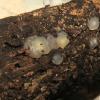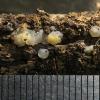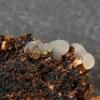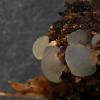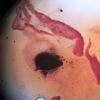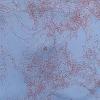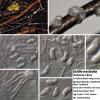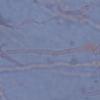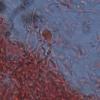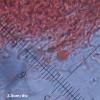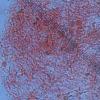
31-12-2025 19:27
Collected from loamy soil, at waterside (completel

30-12-2025 16:44
Pascal DucosBonjour,Une anamorphe rose stipitée, très nombre

30-12-2025 17:14
 Bernard CLESSE
Bernard CLESSE
Bonjour à toutes et tous,Pourriez-vous aider Albe

29-12-2025 10:15
Hulda Caroline HolteHello, I found and collected this propoloid ascom

30-12-2025 09:04
Hello.A Pyrenomycete sprouting sparsely but very d

29-12-2025 17:44
Isabelle CharissouBonjour,J'aimerais savoir si d'autres personnes au

12-11-2021 00:03
Lepista ZacariasHi everybody,A week ago in my fiels trip I noticed
Gelatinous hyaline discs (Exidia ?)
Stephen Martin Mifsud,
27-11-2017 17:09
 Dear friends, I have come across what I believed to be an ascocarp but after microscopical investigations, I don't what it is composed of!!!
Dear friends, I have come across what I believed to be an ascocarp but after microscopical investigations, I don't what it is composed of!!!The bodies were jelly-like and very difficult to slice, hyaline or slightly pulverous above, astipitate, cushion-like bodies sitting on the surface of a decaying twig, sometimes coalescing to form colonies. Some individuals had a pale ochraceous granule at the centre which under the microscope seems to be abiotic and disintegrate into amorphous particles
When finally I sliced a section, I could see a meshwork of numerous 'hyphae' without any special reproductive organs. No spores could be detected.
Is it an Exidia?
Sliced section shows a central amorphous body suspended in a loose gelatinous tissue composed of loose hyphae in a meshwork network (very thin - 1um ) and an outer layer made up of a different denser tissue, but without any special organs (eg asci)
Lothar Krieglsteiner,
27-11-2017 17:13

Re : Gelatinous hyaline discs (Exidia ?)
Hello Stephen,
although the micros are very small, I am quite sure that your fungus is not an ascomycete but a Heterobasidiomycete.
Best regards, Lothar
Chris Yeates,
27-11-2017 17:30
Stephen Martin Mifsud,
27-11-2017 18:17

Re : Gelatinous hyaline discs (Exidia ?)
Dear friends,
I agree perfectly - I just examined better the slide and although I could not see the spectacular basidia of this genus, there are 'basidioles' which are matching with those of Exidia sp. The central calcium oxalate deposit is typical of Exidia nucleata:
http://cemachampi.blogs.sudouest.fr/archive/2014/02/20/etude-exidia-nucleata-une-exidie-a-concretions-d-oxalate-de-1017337.html
I washed the specimen in KOH and maybe I washed away the spores from the surface. I'll prepare a slide from a raw specimen. COOL!



